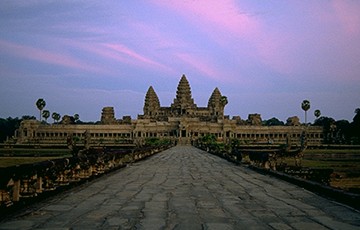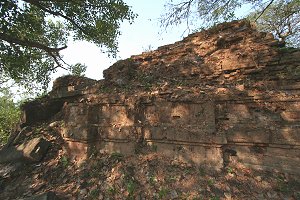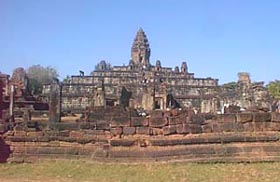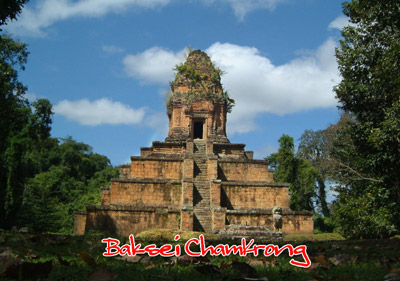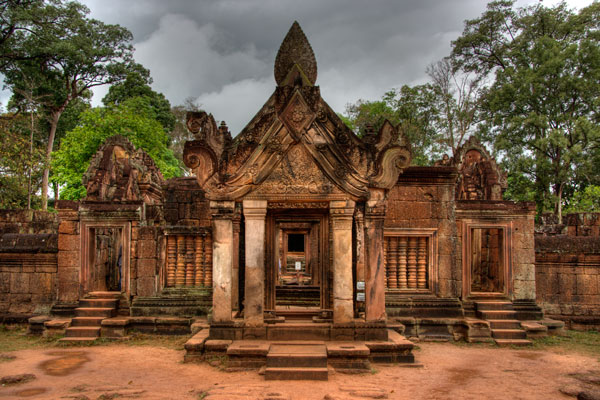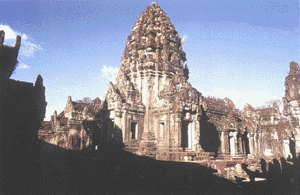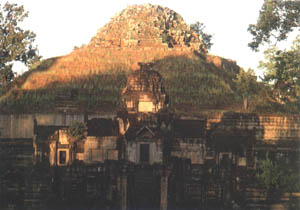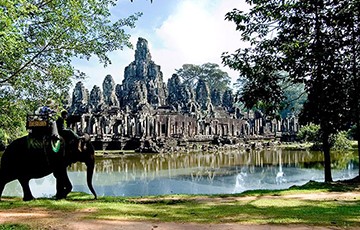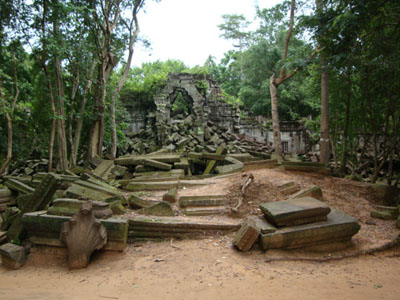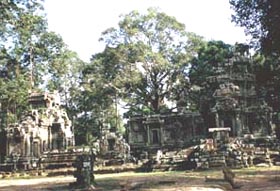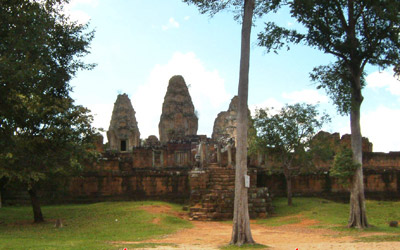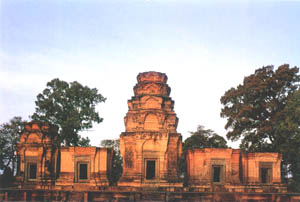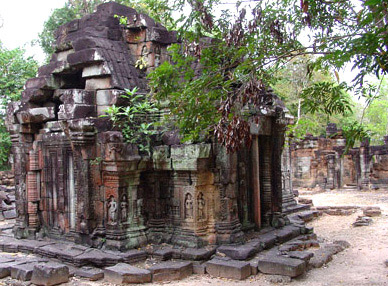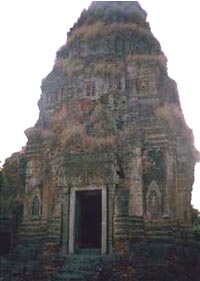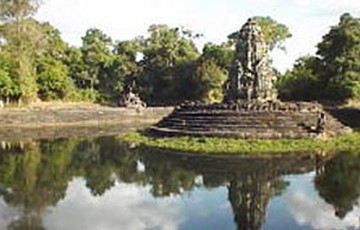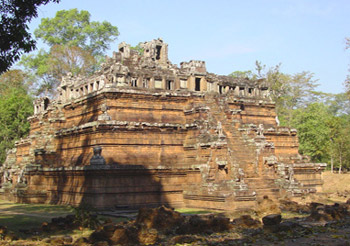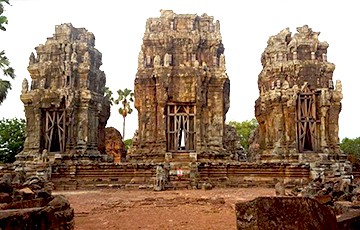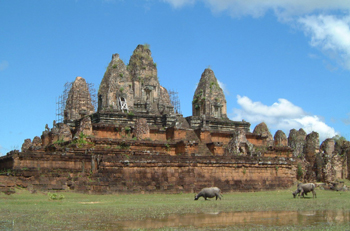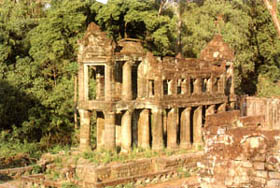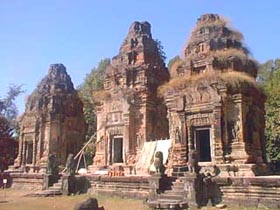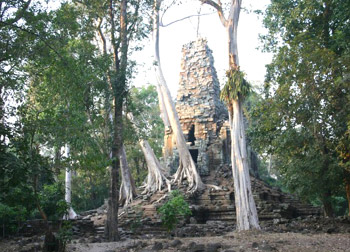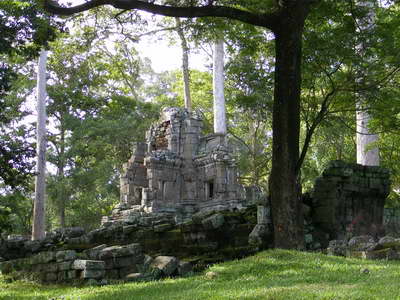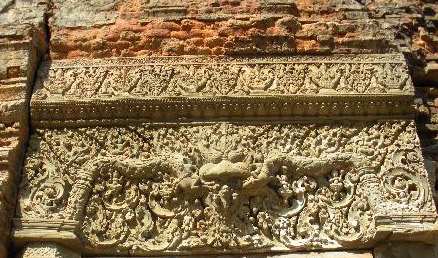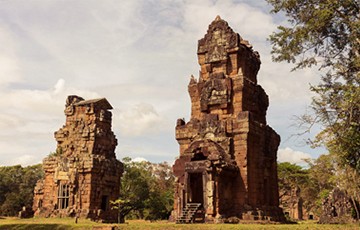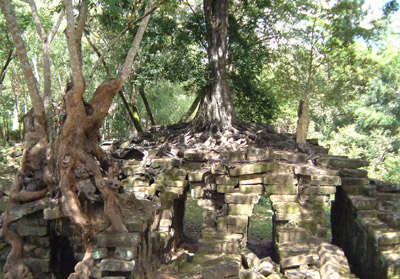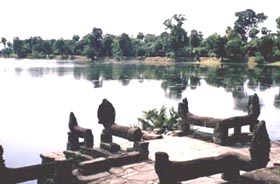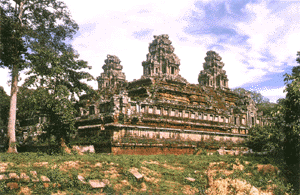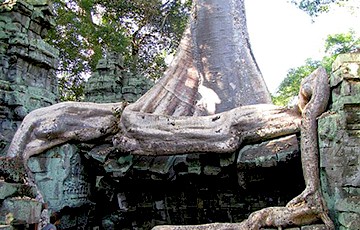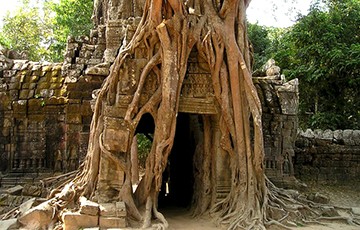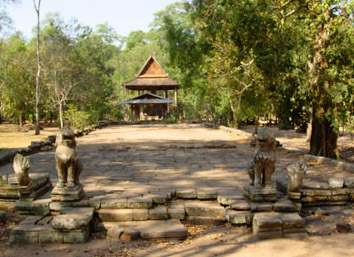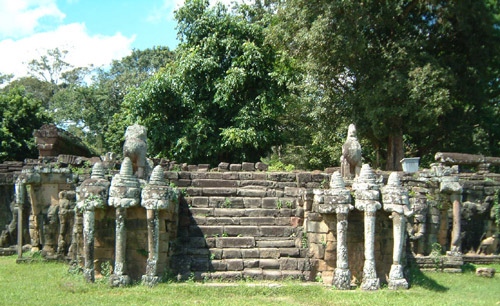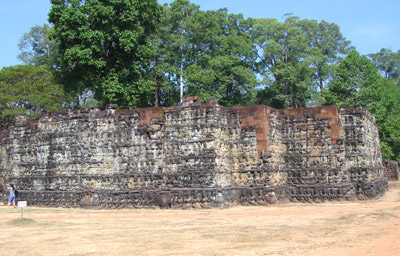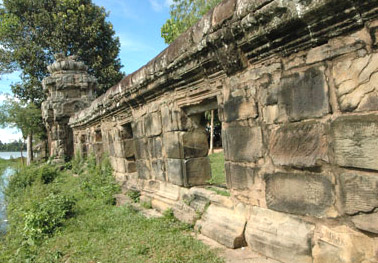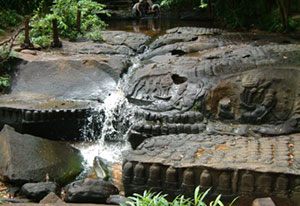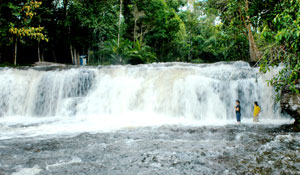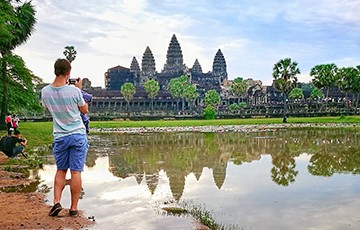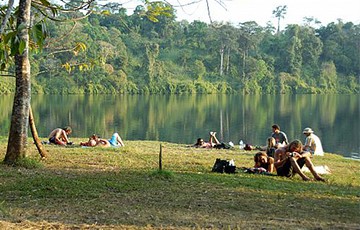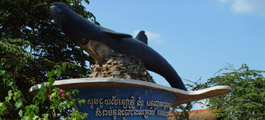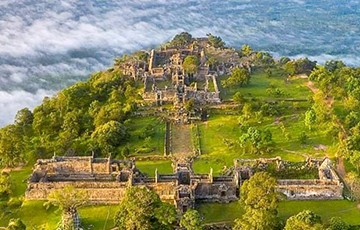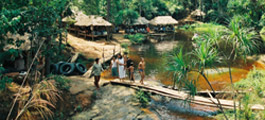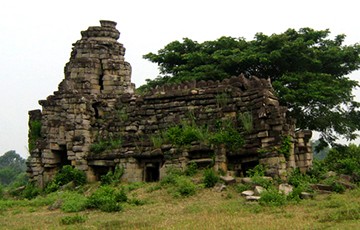Prasat Banteay Kdei
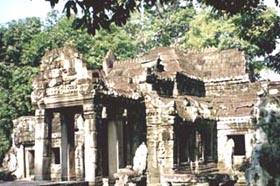 The citadel of the cells. In the ruin and confusion of Banteay Kdei the carvings take one's interest. They are piquant, exquisite, not too frequent... they seem meant.. to make adorable a human habitation.
The citadel of the cells. In the ruin and confusion of Banteay Kdei the carvings take one's interest. They are piquant, exquisite, not too frequent... they seem meant.. to make adorable a human habitation.
Banteay Kdei is located south of Ta Prohm. A enter the monument from the west and leave at the west or vice versa, either way, also visit Srah Srang.
It was built in middle of the 12th century to the beginning of the 13th century by king Jayavarman II in Mahaya Buddhism with following at least two different art periods Angkor Wat and Bayon are discernible at Banteay Kdei.
BACKGROUND
Banteay Kdei has not been restored and allows the visitor to experience what it may have looked like originally. Changes and additions account for is unbalanced layout. Banteay Kdei was built of soft sandstone and many of the galleries and porches have collapsed. The wall enclosing the temple was built of reused stones.
LAYOUT
The temple is built on the ground level use as a Buddhist monastery. The elements of the original design of Banteay Kdei seem to have been a Central Sanctuary, a surrounding gallery and a passageway connected to another gallery. A moat enclosed the original features of the temple. Another enclosure and two libraries were among the additions in the Bayon period. The outer enclosure (700 by 500 meters 2,297 by 1,640feet) is made of laterite and has four entry towers.
A rectangular courtyard to the east is known as 'the hall of the dancing girls', a name derived from the decoration which includes dancers
The entry tower of the second enclosure (3) is in the shape of a cross with three passages; the two on either end are connected to the literate wall of the enclosure (4) 320 by 200 scrolls of figures and large female divinities in niches. In the interior court there is a frieze of Buddha.
A causeway of a later date, bordered with serpents, leads to the entry tower of the third enclosure. It comprises a laetrile wall includes a gallery with a double row of sandstone pillars that open onto a courtyard. Tip Parts of this area have been walled in and passage is limited.
Vestiges of the wooden ceiling can still be seen in the central Sanctuary. The galleries and halls, which join it in a cross to the four entry towers, are probably additions. Two libraries open to the west in the courtyards on the left and right of the causeway.




